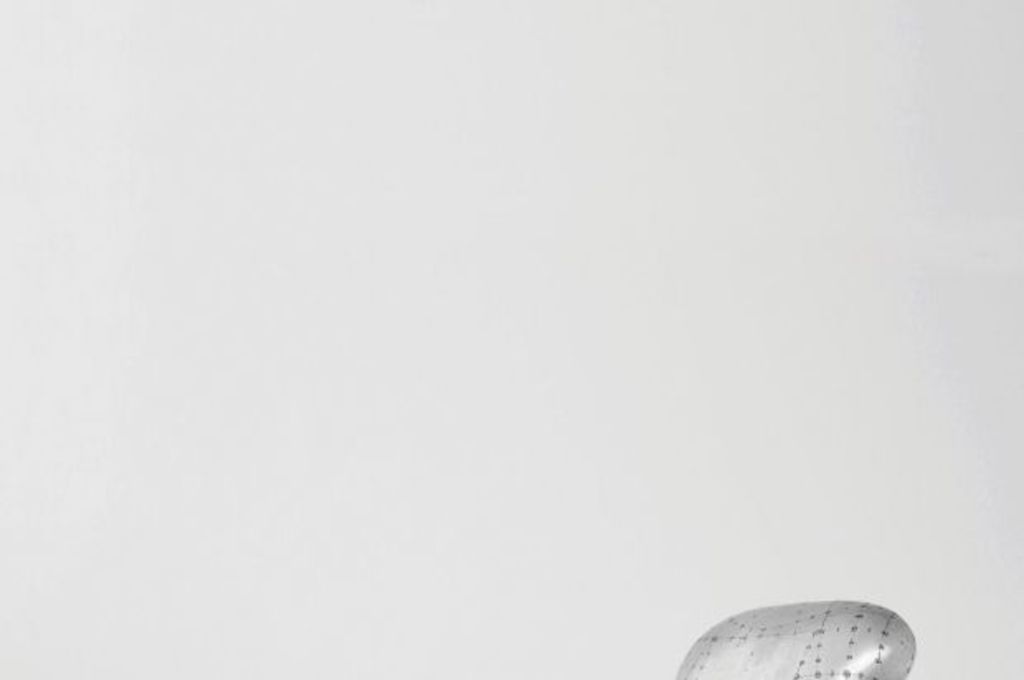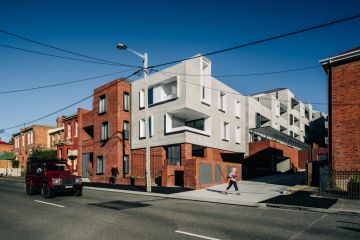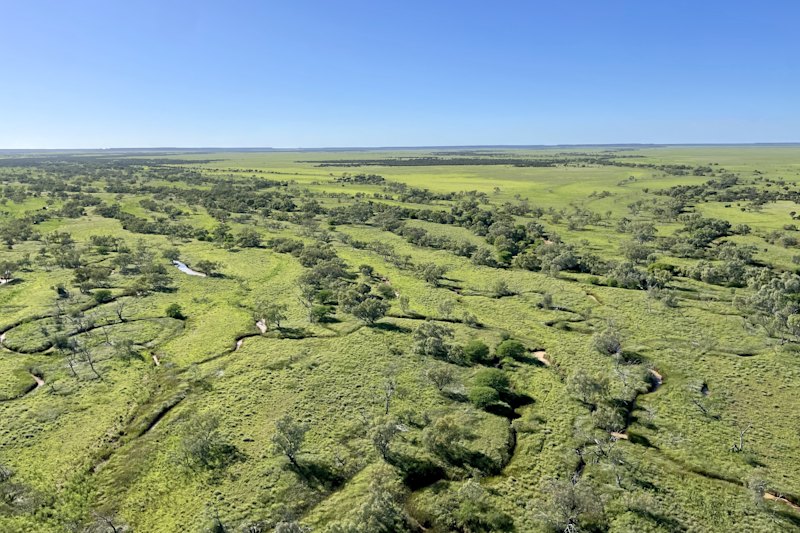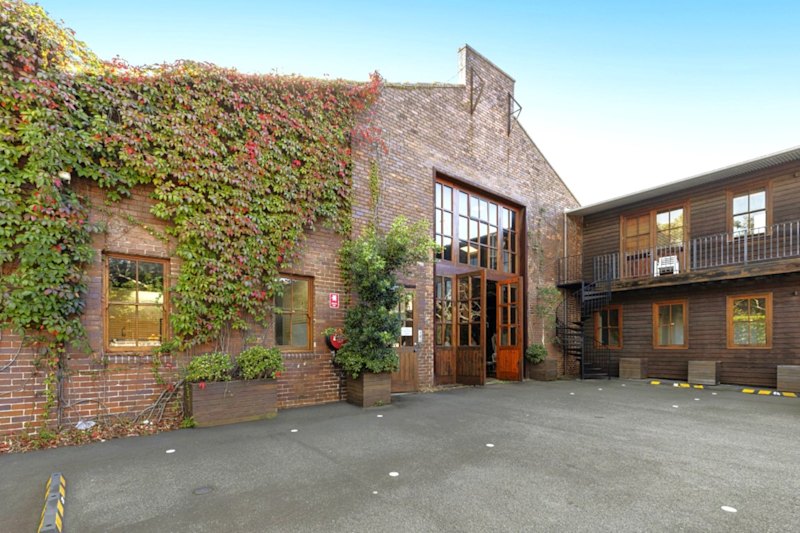Home-grown heroes: Are these the most iconic Australian products in history?

In the pantheon of industrial design, Australia really punches above its weight. For a country with a smaller national population than many Chinese cities, we have created some pretty impressive objects. The Hills Hoist is a case in point. Not only does it dry your undies, in an environmentally sustainable way, it’s great for children to swing on.
And what other country, except Australia, could have given us the wine cask? Consume the contents, blow up the silver bladder and you have a perfectly serviceable pillow on which to sleep off the hangover.
So, in the spirit of patriotism, we delved into the annals of home-grown design, and arrived at this top 10:
R152 Contour Chair (1951)

R152 Contour Chair in small dot pattern. Photo: Gordon Mather Industries
Inspired by a folded tram ticket, the Contour range of chairs was designed in Melbourne by Grant Featherston; arguably Australia’s greatest post-war furniture designer. Ergonomic, organic and eminently cool, the shell was made from moulded plywood at a time when the technology to bend plywood was in its infancy.
Original versions fetch high prices at auction. Gordon Mather Industries is licensed to manufacture the chair, along with other Featherston classics.
From: Gordon Mather Industries
Dolphin Torch (1972)

- Related: Australian brand One Another supporting artisans
- Related: Subway tiles conquering the world of design
- Related: Australia’s most underrated architectural gems
Sure, the original may have been designed by Eveready in the US in the mid-1960s, but it was Australian designer Paul Cockburn of Design Field who created the pug-ugly Dolphin we all came to know and love in the early ’70s.
Made to be shock-resistant and waterproof, the Dolphin Mark II was, for a decade, the best-selling torch in the world and the only lamp we’d trust in a blackout.
From: Bunnings.
Lockheed Lounge (1986)

Lockheed Lounge by Australian designer Marc Newson. Photo: Supplied
Not just an Australian design icon, but internationally significant, the Lockheed Lounge was designed by the human-ego, Mark Newson for his Sydney College of the Arts graduation exhibition in 1983 (early versions were called the LC-1).
Three years later, the riveted aluminium and fibreglass chaise was launched at the Roslyn Oxley Gallery in Paddington. The chair became famous when Madonna was seen draped over it in the clip for her 1993 hit, Rain. In 2015 a Lockheed sold at auction in London for $4.69 million. Not bad for a lounge that’s too uncomfortable to actually sit on.
From: In your dreams.
F!nk Water Jug (1993)

F!nk Water Jugs in an array of colours. Photo: Damian McDonald
When Robert Foster died last year, he left behind a legacy of great design. But the one design for which he will be most remembered is a distinctive anodised aluminium water jug. The 1.45 litre jug was originally commissioned in 1993 by Canberra’s Republic restaurant and created at Foster’s Queanbeyan-based studio, F!nk + Co.
Nowadays the F!nk Water Jug is displayed in collections throughout the world, including the Alessi Museum in Milan and London’s Royal College of Art. And it is still available in six colours plus satin silver.
From: F!nk
Mud Ceramics (1994)

Mud Ceramics is the darling of food stylists across the globe. Photo: Mud Ceramics
Started by the hyper-talented Shelly Simpson in 1994, Mud is the darling of food stylists across the globe. And why not? It’s funky, colourful and robust.
Made from French Limoges porcelain to produce a distinctive matt finish, everything from Mud is still handmade at Marrickville in Sydney’s inner west.
From: Mud Australia
Neoz Cordless Lamp (1995)

Neoz Ice Square 100 Cordless Lamp at Les Ombres Restaurant. Photo: Jackie Chan
Neoz arrived at the battery-charging cordless lamp while working on the lighting design for Penfold Wine’s Magill Estate restaurant. The company was founded by artist Anne Gothe and industrial designer Peter Ellis in a Bellingen farm shed.
These days you’ll find Neoz lamps in private homes, and on the tables of the world’s finest restaurants, from the London Ritz, to Raffles Singapore.
From: Neoz
Delta Sofa (1998)

The Delta III King Living couch. Photo: Felix Forest
The Delta sofa by King Living remains one of the biggest selling pieces of furniture in Australian history. When introduced in 1998, it revolutionised the way people used their sofas, with its modular steel-framed construction allowing a degree of flexibility formerly unknown.
In 2005, the Delta II appeared on the set of Oprah, and two years later it was the sofa of choice for the Vanity Fair Oscars after-party in Hollywood, and again in 2011.
From: King Living
Akira Rugs Collection (2005)

One of the most successful design collaborations in recent years has been between Designer Rugs and Akira Isogawa. In 2005 Designer Rugs enlisted Isogawa to create a limited-edition range of pure wool floor rugs.
The result was an instant classic, spawning two more Isogawa rug collections, one in 2007 and another in 2012.
From: Designer Rugs
Imperial Pheasant Wallpaper (2008)

Catherine Martin’s Imperial Pheasant wallpaper in mink. Photo: Annandale Wallpapers
It would be fair to say that the best part about Baz Luhrmann’s Australia, was the wallpaper. And that was down to the director’s wife, the incomparable Catherine Martin. Her “Australia” wallpaper collection for Mokum is a stunner, with the standout being Imperial Pheasant.
Still a best seller, the art-nouveau design depicts regal Chinese pheasants dancing among chrysanthemums.
From: Annandale Wallpapers
Dinosaur Designs Salad Set (1991)

The salad set soon became a must-have. Photo: Dinosaur Designs
When three art students – Stephen Ormandy, Liane Rossler and Louise Olsen – set up a stall at Sydney’s Paddington Markets, selling hand-printed T-shirts, dresses, and jewellery, little did they know they were creating an empire. The trio soon turned to using resin, which they mixed and shaped in Ormandy’s parents’ garage. After Kylie Minogue was spotted wearing the resin jewellery, sales took off.
In 1990, the company included homewares in its expanding range. The salad set soon became the must-have in which to serve the caesar at all the right dinner parties.
From: Dinosaur Designs
We recommend
We thought you might like
States
Capital Cities
Capital Cities - Rentals
Popular Areas
Allhomes
More







